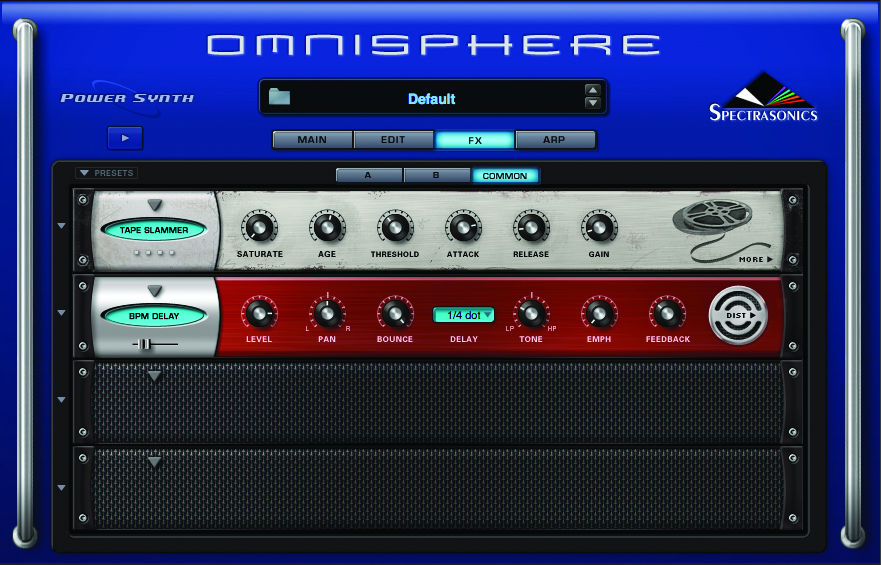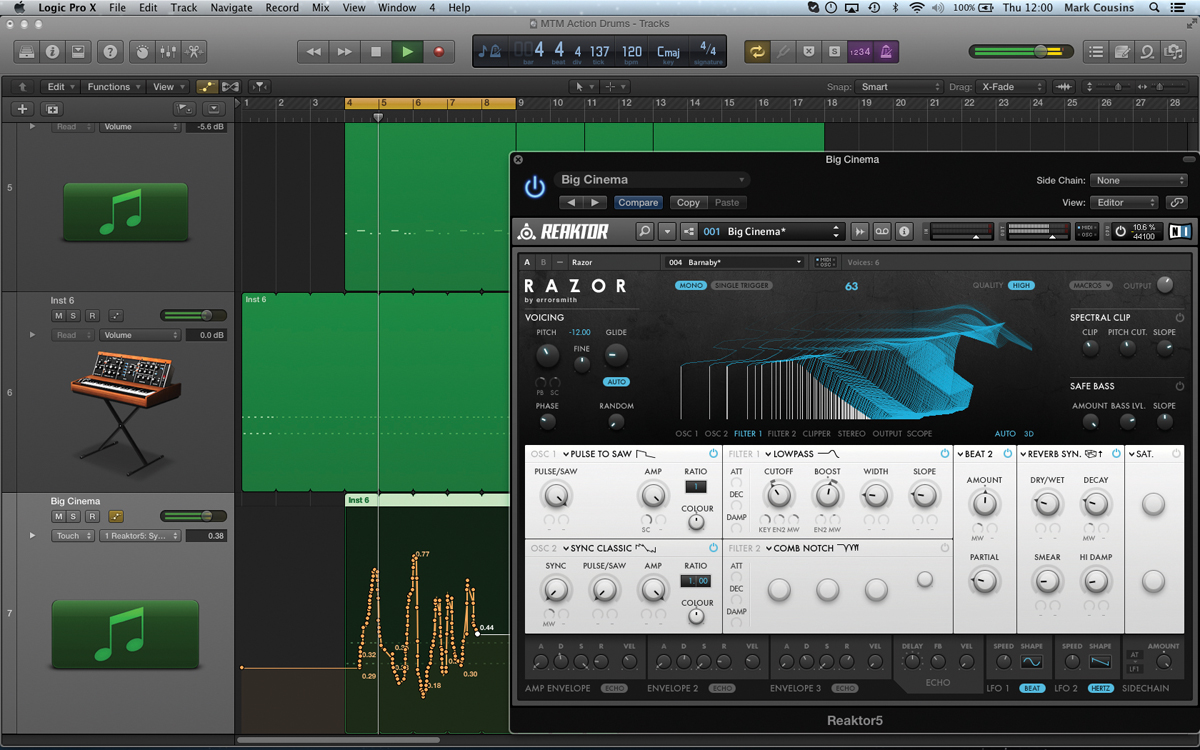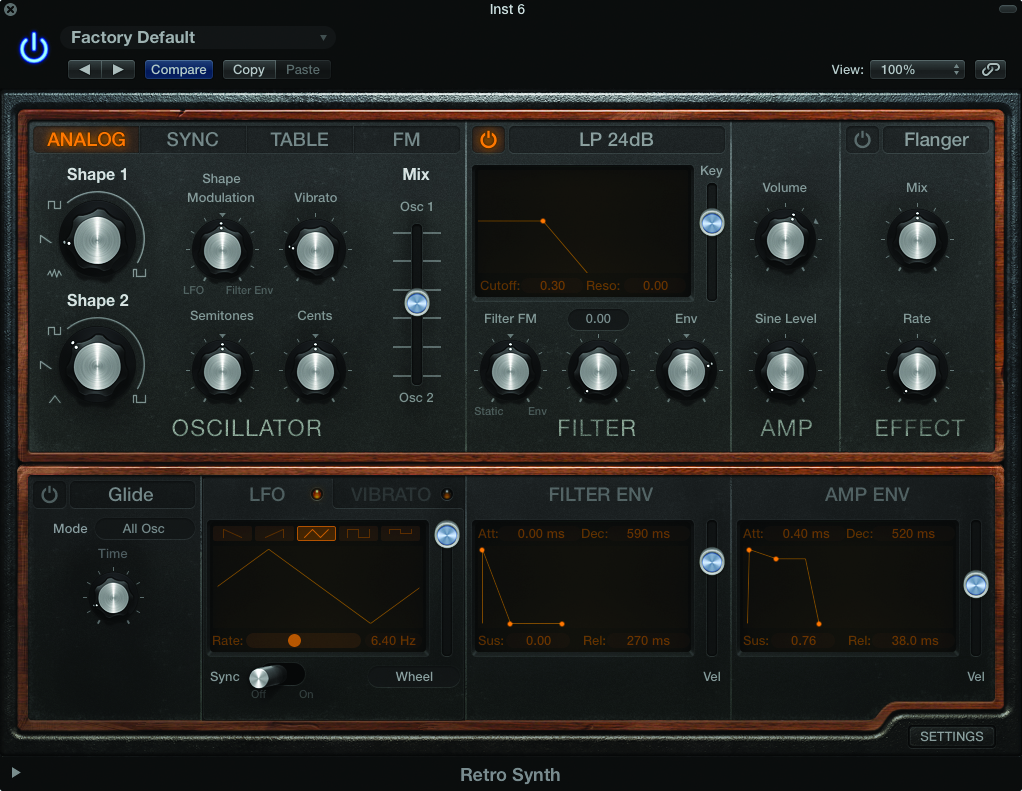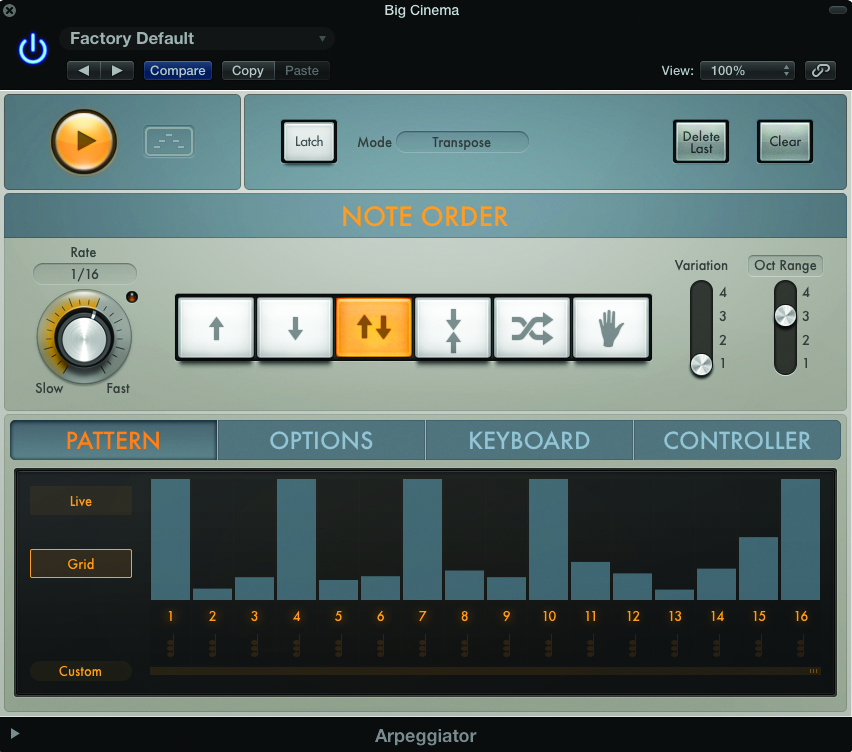Logic Tutorial: Cinematic Synth Bass
Following on from our investigation into cinematic percussion, Mark Cousins demonstrates how to add some powerful synth bass to your scoring… For this tutorial you will need the project file – download here The last time we looked at music to picture, we took a closer look at how drums can be used to provide […]

Following on from our investigation into cinematic percussion, Mark Cousins demonstrates how to add some powerful synth bass to your scoring…


For this tutorial you will need the project file – download here
The last time we looked at music to picture, we took a closer look at how drums can be used to provide the energy and drive behind an action cue. However, there was one key element we left out – the role of the synthesiser in providing the harmonic ‘pulse’ to the music.
Look at a range of contemporary film scores – from Hans Zimmer’s Dark Knight trilogy to Brian Tyler’s work with the Marvel films – and you’ll see how a pulsing synth bass forms an integral part of the score. The reason for this is two-fold. Firstly, synth bass can form an important harmonic foundation (often going deeper than the low end of the real orchestra), and secondly, its relentless, mechanical precision really helps drive the cue along.
First Steps
To create your own pulsing synth bass, there are a number of creative options you can explore – both in respect of the means of creating the pulse and how to process and layer the sounds. Arguably the simplest solution is to program the sequence from scratch, usually using the step time input in your piano roll editor, or simply drawing in a series of 16th-note divisions.
One key concept to pin down at this stage is whether you intend to use some form of accenting. While a relentless swathe of 16th notes can work well, it’s often useful to mirror the accent pattern that you’ve built up in your drum sequence.
As we saw in the last workshop, the use of a consistent accent across multiple parts really helps to define the energy of your cue, especially when you start to use some clever off-beat syncopation. The accent can be defined in two ways: either using velocity (as you’d expect) or by the use of octave switching, so that the bass part uses notes an octave higher to define accent points.

Push the Envelope
As well as using your own programmed MIDI sequences, you can also look at exploring features within the virtual instrument plug-ins themselves. One notable solution is the use of complex, rate-level envelope generators, which can be put to distinctive use on synths such as Massive, Omnisphere and Absynth (to name but a few).
The envelopes can be routed through to a number of different parameters (filter cutoff, the amplifier, oscillator pitch and so on) to create a range of interesting pulsing effects, all triggered from a single MIDI note. An alternative approach is to use an arpeggiator, either on the instrument itself or as a MIDI plug-in, as a means of creating a 16th-note sequence.
Beyond the basic sequence, start to think about how you can layer further instances, as well as using additional signal processing plug-ins. When it comes to the application of effects, two of the best options are distortion and a tempo-synced delay.
The distortion works wonders when you want to increase the amount of aggression in the cue – maybe starting from a subtle filtered synth bass to one that has a dense collection of harmonics that cut through the track. Likewise, the tempo-synced delay can increase the rhythmic interest that the part provides, especially in situations when you’ve added some form of accent to the pattern.

Finger on the Pulse
The use of layering – both as a means of developing the cue over time and defining the top-to-bottom use of frequency space – often makes a big difference to the cue’s musical effectiveness.
Think about carving a unique sound space for each part by varying a few key parameters. A harmonically-rich synth pulse sound, for example, could have a clipped envelope with a short decay, allowing the sound to cut through, but not dominate the mix.
Likewise, low-pass, band-pass and high-pass filters all have their part to play defining a unique part of the frequency spectrum. As you add parts, therefore, consider using different filter modes so that each has its own space.
Although we’ve covered the key points here, there’s really a whole world of options for you to explore, particularly with the release of new software instruments that are either dedicated to the task of ‘synth pulses’ or particularly adept in that area.
One perfect example of this is Output’s Signal, which includes a specifically designed Pulse Engine that embeds many of the techniques described here into the front-end of the instrument. Ultimately, it’s the perfect way to embed the power of a synthesiser into a cutting-edge score, and a great way to give your music the energy and drive it deserves.

Focus On Arpeggiators
Arpeggiators can be a good source of pulse effects, especially if you exploit their full creative potential. Experimenting with the note order (up, down, random, and so on), as well as octave range, can bring some interesting serendipitous results.
However, for a more predictable output, consider using its in-built step sequencer track lane, which is an integral feature of both Logic Pro X’s arpeggiator and the arpeggiator included in Omnisphere. Use the step sequencer track lane to define preset accent patterns, which can be mapped through to filter cutoff or amplifier level. If you’re feeling really adventurous, try setting a number of steps that’s deliberately wrong (15, for example) and then hear a unique syncopation effect that changes by 1/16th every bar!
Click Here for Step-by-Step Guide
This tutorial is endorsed by Point Blank. With courses in London, online and now in LA, Point Blank is the Global Music School. You can study sound to picture on their Music Production Diploma courses, with pro industry tutors.
